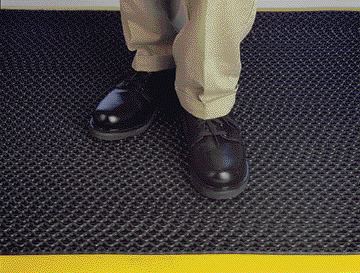
Managing the hazards of workplace fatigue
April 22, 2021
By
Candice Raynsford

Fatigue can be a hazard in and of itself, but what is often overlooked is how fatigue elevates other identified risks. (Adobe Stock)
Worker fatigue is a widespread concern across Canada, as the effects can negatively impact employee health and safety.
An estimated 78 per cent of employees feel tired at least one day per week at work. Additionally, the Conference Board of Canada reports that 27 per cent of Canadian workers are fatigued most days or every day during a workweek.
Left unaddressed, fatigue can have disastrous consequences on employee and organizational well-being. By addressing the root causes of fatigue in the workplace, employers can enhance worker health and safety.
The consequences of fatigue
Workplace fatigue weighs on the physical health of employees, which in turn influences employee performance.
Symptoms of fatigue include headaches, physical weakness or exhaustion, loss of appetite, digestive problems and increased vulnerability to illness.
Additionally, workplace causes of fatigue, such as prolonged standing, can have other physical consequences such as sore limbs, neck and shoulder stiffness, swelling of the legs and varicose veins.
Research has also shown that fatigue can lower concentration and slow reaction time.
With a slower reaction time, workers have an increased risk of injury from accidents while on the job. Delayed reaction time can increase susceptibility to trips, slips and falls in facilities. Injuries from work-related accidents can require time away from work and lead to costly workers’ compensation claims.
In addition to endangering workers, employee fatigue can have consequences on productivity and profits.
Forty-two percent of Canadian employees said their productivity and performance were worse on days they felt tired. This fatigue costs employers an estimated $330 million annually in lost productivity.
Addressing causes of fatigue is essential to ensuring workers are physically able to perform at their best.

Anti-fatigue matting, popular in workplaces ranging from manufacturing plants to reception counters, for example, helps reduce foot fatigue and keep blood circulating. (File Photo)
Improving the workplace to reduce fatigue
Many factors that contribute to lack of sleep are out of an employer’s control, such as medications, health problems or poor sleep habits.
However, fatigue can also result from uncomfortable work environments, repetitive work, and prolonged standing. Businesses can consider several steps to address the work-related causes of employee fatigue.
- Assess lighting, temperature, and noise levels: If workplace lighting is dim or employees’ vision is limited due to weather or another factor, they can experience increased fatigue. Workplaces with elevated temperatures and loud noise levels can also contribute to fatigue. Employers can assess facilities for adequate lighting and comfortable temperatures and investigate solutions such as noise-cancelling headphones to reduce employee discomfort.
- Encourage movement and appropriate attire: Extended periods of performing repetitive or tedious tasks without regular breaks can also cause fatigue. To decrease repetitive work, employers can consider breaking up tasks so workers can change activities regularly. Performing one task without changing positions can also trigger fatigue. To combat physical discomfort from standing for extended periods of time, organizations can provide a seat or footrest to help employees move around and shift their weight. Changing working positions decreases strain on individual muscles that can lead to fatigue. Additionally, employers can encourage workers to wear fitted shoes with thick soles to reduce soreness.
- Provide comfortable flooring and anti-fatigue mats: Flooring type is also a major factor in fatigue, especially in roles that require prolonged standing, such as industrial work, food service, retail, and hospitality. Hard floors made from materials like concrete have the same impact on feet as hitting the heel with a hammer at every step.
If changing floor material is too costly or disruptive, organizations can consider anti-fatigue mats that help alleviate discomfort. Anti-fatigue mats contain air domes that absorb shock from hard surfaces and provide a comfortable standing surface. This design provides comfort to legs, feet, and backs to help reduce pain and fatigue. Facilities can opt for mats that are designed with a dual gripper system to minimize mat movement and a beveled edge.
Benefits of reducing fatigue
Fatigue has the potential to decrease productivity, increase on-the-job injuries and impact overall employee well-being.
Fortunately, employers can assess the work environment and practices and consider solutions to mitigate the risk of fatigue.
Installing anti-fatigue mats in areas where workers stand for extended periods can go a long way in improving the workplace to help reduce discomfort and fatigue.
Candice Raynsford is the marketing manager with Cintas Canada Ltd., a provider of facility services, first aid and safety, uniforms, flame-resistant clothing and compliance training.